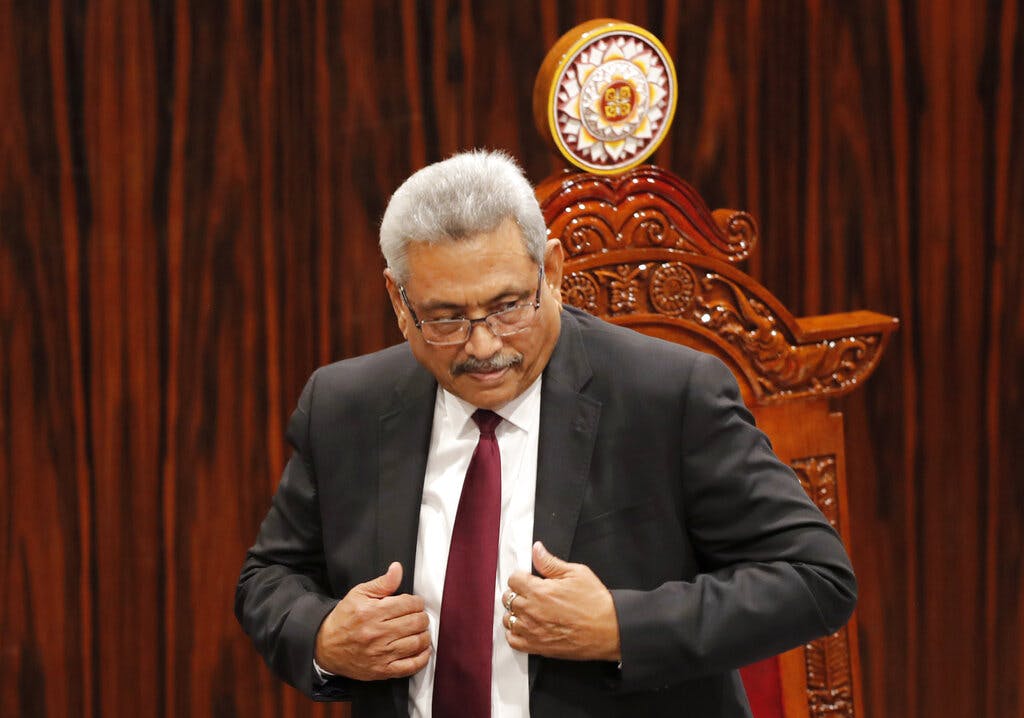The Ideas That Destroyed Sri Lanka
Organic farming meets Modern Monetary Theory — and voila.

Sri Lanka, a country that was elevated by the World Bank to its “upper-middle-income” category only three short years ago, is, today, destitute. By my measure, its currency has lost 54 percent of its value against the U.S. dollar since the former president, Gotabaya Rajapaksa, came into office on November 18, 2019, and its inflation rate stands at 115 percent a year.
The treasury of Sri Lanka is overdrawn on one account after another, and the country’s foreign exchange reserves are negative. Sri Lanka is bankrupt, unable to import basic necessities, like gasoline. On its knees, Sri Lanka has been forced to pass the begging bowl to the International Monetary Fund and anyone else who might give it an audience.
Just how did such a dramatic collapse take place so rapidly? As it turns out, it was all the work of an epistemic community of techno-managerial international movers and shakers and two present day nostrums: organic farming and Modern Monetary Theory. First, let’s take a look at the actors behind organic farming and its disastrous results in Sri Lanka.
On January 7, 2016, Nobel laureate Joseph “Joe” Stiglitz and the ever-present George Soros met with Ranil Wickremesinghe. He was then Prime Minister of Sri Lanka, and has recently been appointed president by the exiled president, Gotabaya Rajapaksa. Apparently, Mr. Stiglitz, a long-time advocate of organic farming, had the ear of the six-time Prime Minister of Sri Lanka.
Two weeks after the Stiglitz-Soros-Wickremesinghe meeting, Mr. Stiglitz published an op-ed “What’s Next for Sri Lanka?” in which he advocated organic farming for Sri Lanka. It was immediately posted by the World Economic Forum in Davos, Switzerland.
With the backing of the powerful epistemic community, Gotabaya Rajapaksa campaigned for President in 2019 on an organic farming, going-green platform — synthetic fertilizers and pesticides would be verboten if Mr. Rajapaksa were elected. He dubbed this policy “Vistas of Prosperity and Splendor.”
On November 18, 2019, Gotabaya Rajapaksa was elected President of Sri Lanka. On April 26, 2021, he implemented a full ban on the importation and use of all synthetic fertilizers and pesticides. A few days later, the World Bank and European Union issued a joint grant of $28 million to Sri Lanka’s Ministry of Agriculture.
Unsurprising to anyone who has a basic knowledge of agriculture, the ban had an immediate and devastating effect. Domestic rice production plunged by 20 percent in six months and the price of rice surged by 50 percent. Tea production, another important crop, took a big hit, too.
The United Nations whitewashed this going-green disaster. On January 26, 2022, The Food and Agriculture Organization of the United Nations, an advocate of organic farming, published a report on Sri Lanka. The report claims that food price increases were a result of “a significant depreciation of the national currency” and that lower crop yields could be explained by rising input prices.
Somehow, the report makes no mention of the elephant in the room: the disastrous effects of Sri Lanka’s organic farming initiative. What, though, about the other nostrum: Modern Monetary Theory? This is another formula for disaster that’s peddled by leftists and their camp-followers who populate the international chattering classes.
MMT is the latest in a tradition of funny money schemes that go back to John Law’s disastrous Mississippi Bubble money printing experiment in early 18th century France. The common denominator and underlying fallacy of these schemes is the idea that the government or its pet bank can somehow spend and print its way to prosperity for all.
The Rajapaksa government bought into MMT as fast as it had swallowed the organic farming porcupine. The Rajapaksa government spent freely, running large deficits and piling up government debt. The Central Bank of Sri Lanka became a great facilitator. Indeed, in 2020, the bank’s governor, W. D. Lakshman, had this to say:
“The fears around debt sustainability appear to be unfounded. As rupee-denominated bonds were within the ‘sovereign power,’ money could be printed to repay them as indicated by ideas like Modern Monetary Theory.” So, there you have it. For the first time, a governor of a central bank publicly and explicitly embraced MMT.
The epistemic community, led by the likes of George Soros and Professor Stiglitz, swings a heavy wrecking ball. Thirty-five years ago, the French philosopher Michel Foucault warned of the damage these international movers and shakers could inflict. As Foucault cautioned: “the masses do not need intellectuals to understand things; they have a complete, clear, and better knowledge than intellectuals and are well able to express it.”
